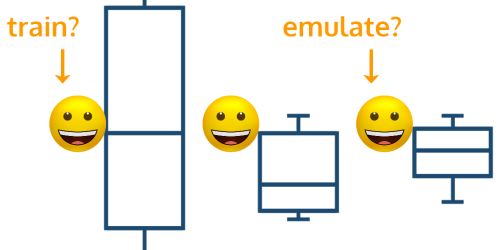The Client Intake Process
Are you sabotaging your business by making it too easy to work with you?
So much of today’s business rhetoric is about “removing barriers.”
But you’re introducing barriers if your client intake processes and intake forms are not, at every step of the way, helping you make meaningful progress towards a successful outcome.
In practice, these barriers look like
- signing on with poor fit clients,
- wasting time having multiple meetings to get information you should have collected earlier,
- customer complaints about not getting what they expected, or not seeing progress, or things taking so long, and
- you, not putting in the work to sign on new clients, or maybe not even wanting to, because onboarding new clients takes too much time and energy.
In this post, I clarify what a client intake process is, and what it should entail for your business and your clients.
Let’s dive in!
What is the client intake process?
Client intake encompasses all of those activities involved with onboarding a new client. Unlike onboarding a new employee, in which the focus is on bringing the new employee up to speed on the role, onboarding a new client means that both parties – the new client and your company – need to be brought up to speed.
The client intake process begins as soon as first contact is initiated, and it lasts until you’ve gathered all of the information necessary to successfully deliver your service. Depending on your service, you might have feedback cycles, coaching sessions, or similar where you’re working together with your client, or otherwise delivering on milestones, but, if you’ve done intake well, there shouldn’t be any surprises that mean that you’ve got to backpedal or course correct or pause while you gather more information from the client about goals, needs, budget, regulatory issues, etc.
That means that intake picks up where your marketing left off, and begins that blend into your sales process and beyond.
It anticipates what’s going to come next.
What should the client intake process entail?
The blend from marketing into sales is where you take those final steps to make sure that you’re disqualifying poor fit leads and qualifying good fit prospects before any contracts are signed, including, perhaps, redirecting them to services other than the one requested, or sending them to a referral partner that’s a better fit.
From the client’s perspective, the intake process is where you introduce them to the experience of working with your company, including what the next steps might look like, and set expectations of what will be required of them and delivered by you.
From your perspective, this is where you apply your knowledge and experience of what you’ll need to get the job done well, and build that in to how you communicate with and gather information from prospects and clients. In other words, you’ll use your history with other clients to anticipate what you need to know about and from prospects, and your intake process and forms will help you gather that information in the format in which you need it, and have it ready to go when you need it.
If it’s an issue, this is also where you mitigate against moving too quickly towards proposing solutions before you’ve gathered enough information about the problem you’re addressing.
From a birds-eye view of your business, the intake process is part of your system, meaning that it intersects with other things like
- sales processes – qualifying leads into prospects, and finding out everything you need to know to direct prospects to the right-fit service, including upsell opportunities,
- CRM and Customer Service related processes – collecting contact and other information in a way that’s easy to find, reference, and update, AND being able to talk knowledgably with them about your work together if they call,
- legal and financial processes – like contract information and billing,
- time, resource, and project management processes, and
- new marketing opportunities with existing clients.
What are the benefits of a standardized client intake process?
Recognizing this intersection, and coordinating these processes:
- saves time,
- sets you up to collect clean, usable, and reliable data,
- keeps the company and brand consistent across all of these moving parts, even if you’re coordinating across multiple people and multiple departments, and
- helps you deliver a successful outcome, because of how you’re anticipating what you need throughout these business systems from the very first step.
As a last point, know that you might revisit the intake process with the same client if
- there’s discussion over changing the scope of what you’ll do for the client under the same contract, or
- you’re starting a new program, project, or other type of service with this same client.
So intake isn’t necessarily a one-and-done.
How do you create a client intake process?
There’s no crystal ball, and every client is different. So, client intake isn’t about making your work with clients as cookie cutter and homogenous as possible. It’s about creating a framework.
Creating this framework involves reverse engineering from successful outcomes and lessons learned so that you’re collecting the information you need before that information is required for making design or service delivery decisions.
Depending on the range of your services, one framework might work across all of your service offerings, or you might need different frameworks for different types of services.
What’s next?
One of the primary tools of the intake process is the intake form. If you’re curious about how to set up those forms to be just the right level of simple and efficient, check out the post on Client Intake Forms.
If you found this information useful, I’d love to hear about it in the comments! And be sure to share it with someone else who needs it!
If you’d like help with better defining your intake process, integrating this process into your larger business systems, or creating or tweaking your intake forms, DM me on LinkedIn or schedule a meeting with me.






